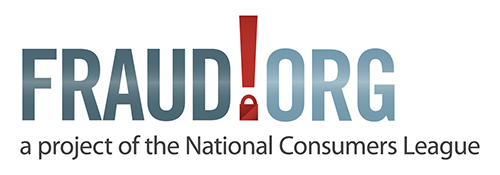Don’t let fraud ruin your holidays
While most individuals think of the holiday season as a time to gather with loved ones and get some rest, scammers use it as another opportunity to defraud consumers. Especially as we all look to save money amidst rising costs, it is important to remain vigilant against suspicious deals and offers.
Coupon scams
Scammers have been preying on consumers hoping to save on holiday expenses. While utilizing legitimate discount codes is a great way to save money, it can be difficult to distinguish between genuine coupons and fraudulent offers. Frequently, fraudsters will offer digital discount codes with eye-popping savings in exchange for personal and contact information—or they may even charge a fee. The scammers may peddle these fake discounts as part of a monthly subscription service or another bogus scheme. Although the specific front will vary, the end goal is the same: the criminals will try to glean the victim’s contact information, if not their cash.
Charity scams
As consumers are feeling charitable during the holiday season, fraudsters often seek to take advantage of our charitable inclinations. Scammers may solicit donations for a phony, non-existent charity or they may impersonate a legitimate nonprofit. Unfortunately, impersonations can be nearly indistinguishable from the cloned organization; the only difference might be one letter missing in the web URL and the destination of the giver’s funds. These fraudsters also may try to pressure the consumer into “donating” quickly with a time-sensitive offer, such as matching a portion of the contribution if it’s made within a certain number of minutes.
Online merchandise scams
Almost as much of a staple of the holidays as exchanging presents itself, fraudsters always traffic counterfeit goods in time for annual festivities. Scammers will frequently advertise expensive and in-demand items, such as a new gaming console or sold-out concert tickets, only to leave consumers with cheap imitations or nothing at all. To further entice potential-victims, these scams usually list much cheaper prices than the legitimate items sell for.
Impersonation scams
With millions of consumers turning to online shopping for holiday gifts, scammers have grown adept at impersonating Amazon, Postal Service, UPS and other commonly-used delivery services. Other common impersonation scams involve tech support, organizations offering free prizes or gifts, survey firms, and even organizations claiming your account was compromised. These scams can use text messaging, email, phone calls, instant messages, and other communication tools to reach potential victims. Other indicators of fraud may be unsolicited requests for payment, creating a false sense of urgency, or offering something that is “too good to be true.”
Gift card resale scams
Although lesser known than other forms of gift card related fraud, gift card resale scams can be a headache following a season of gift-giving. Bad actors usually offer to buy a potential victim’s gift card from them at the full value it’s worth, if they don’t offer to pay extra. This is a clear indicator of a gift card resale scam as true gift card buyers will almost never purchase a consumer’s gift card at full value. Finding a friend or family member willing to purchase a gift card is usually the least risky method of getting value out of unwanted cards.
While different forms of holiday fraud come and go, the following tips can help in determining the legitimacy of any suspicious offer:
- If it sounds too good to be true, it probably is. Whether it’s a cheap price for a sold-out item or coupons offering extreme discounts, be cautious of surprising deals.
- Don’t give in to pressure. While some sales are certainly time sensitive, they usually won’t disappear after only a few minutes. If the person you’re speaking with isn’t taking “no” for an answer and they’re pressuring you to hand over money, that’s a red flag.
- Use a credit card when possible. Credit cards have better fraud protections than debit cards; this allows you to dispute a charge resulting from a scam. Never send money to strangers over a peer-to-peer app like Zelle, Venmo, or Cash App.
- Do a Google search of the name of the seller, charity, or discount site. A quick search could bring up warnings from law enforcement or other consumers. Adding the terms “scam,” “fraud,” or “counterfeit” to your query may help in narrowing the results. It’s important to note that a lack of warnings doesn’t necessarily mean the suspicious entity is authentic.
- Check the marketplace’s refund policies. If you’re using a third-party marketplace to make a purchase or sale (common examples include eBay and Amazon), take a few minutes to check their refund and fraud policies. Knowing what recourse is available—or not available—may inform your decision-making.
- When in doubt, do not reply to text messages, emails, phone calls, or instant messages. Do not click on links in those messages. The best way to check on your online orders or the security of an account is to log in to your accounts on your own. For more details on how to spot and avoid impersonation scams, check out the Better Business Bureaus’ new resource page.
If you or someone you know has been a victim on a holiday scam or any other type of fraud, help yourself and other by reporting it! By using Fraud.org’s secure online complaint form, your complaint will be shared with our network of consumer protection and law enforcement agency partners.









